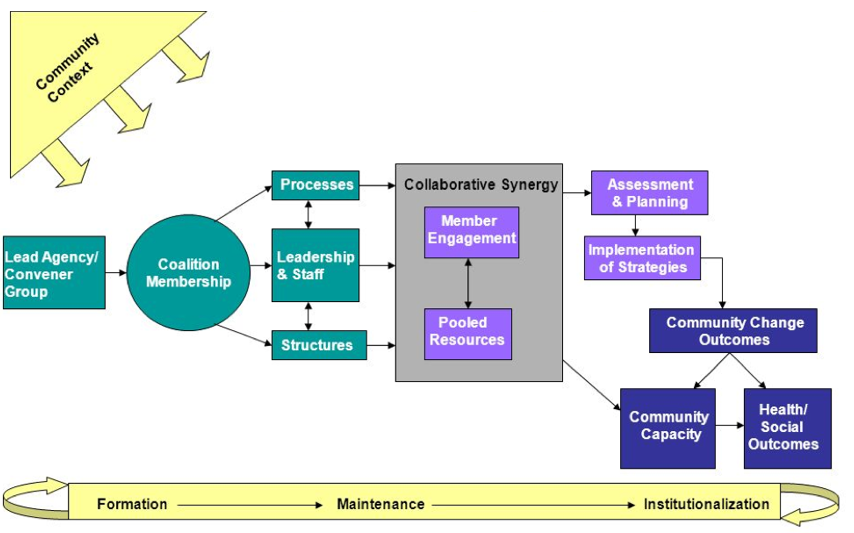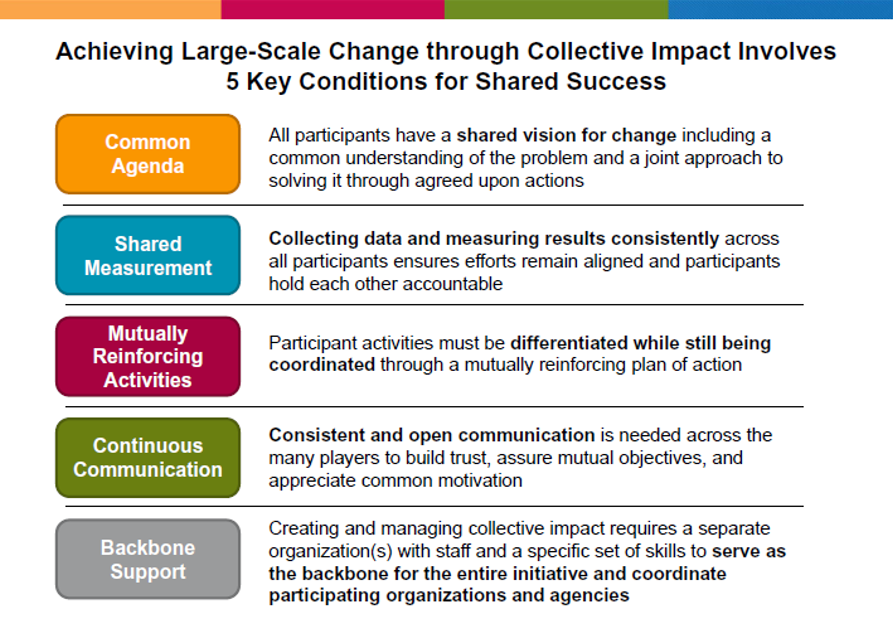Overview
Collaboration and coordination among a community’s stakeholders are essential for mounting an effective response to the opioid crisis.
Collaboration can be facilitated by forming coalitions and task forces, many of which are currently operational in communities across the US. These community groups, often formed independently of any single lead agency, and often as a grass-roots initiative, have been widely implemented in response to the opioid crisis.
Primary objectives usually include:
- raising awareness about opioid addiction and evidence-based treatment options
- providing information on prevention, treatment, and recovery resources offered by local stakeholders
- undertaking initiatives to combat this public health emergency
Coalitions typically host forums for community members and agencies to learn about the impact of opioids and plan initiatives in response.
Task forces, like coalitions, facilitate community-wide collaboration, but frequently involve a lead agency with primary responsibility for convening stakeholders and managing initiatives.
Stakeholders
Stakeholders are potential participants in a community-wide response to the opioid crisis. A comprehensive response likely includes a wide range of stakeholders.
Interagency collaboration to address the opioid crisis may involve modifying or expanding a stakeholder’s mission to mesh effectively with that of other agencies. For example, a police department might assist users of illicit opioids to find treatment, avoiding the stigma of arrest.
Is there a coalition or task force is already underway in your community? Scanning the stakeholder list below may suggest additional partners whose capacities can be tapped to widen your response.
Are you interested in initiating a coalition or task force? Use the stakeholder lists below as a resource.
First responders
- EMS
- Emergency Dept.
- Fire Dept.
- Police Dept.
- Recovery peers and public trained in naloxone administration
Medical/clinical
- Hospitals
- Emergency Depts.
- Treatment
- Health and Behavioral Health Depts
Criminal justice
- Police Dept.
- Probation
- Courts
- Diversion programs
Policy makers
- Legislators
- Administrators
- Boards (e.g., medical, dental, pharmacy)
Educators
- Public and private secondary schools, high schools
- Colleges and universities
- Medical schools
Faith-based
- Churches, synagogues, mosques, etc.
Social services
- Family and children
- Housing
- Community development
- Homelessness agencies
Employers
- Local businesses
- Local govt agencies
- Local NGOs
Press
- Local papers and online news services
People who use drugs
Family members
Peers in recovery
Community Coalition Action Theory

Collective Impact Model (Kania & Kramer, 2011)









